Why Lamborghini's Huracán Sterrato is the wildest supercar on the road today
When first I laid eyes on the Lamborghini Huracán Sterrato — the Italian luxury brand's off-road supercar — a strange thought popped into my mind: "What kind of mad scientist would conjure up this wild-looking thing?"
In this case, it turned out to be Lamborghini (VWAGY) CEO Stefan Winkelmann, who pushed for its creation upon his return to the brand in 2020.
Essentially, Winkelmann wanted a rally-inspired off-road, on-road, off-track, go-anywhere kind of vehicle. And it also had to be a supercar with an angular, low-slung body and raucous V10.
And if that wasn't enough, the Sterrato would be notable because it would be the last naturally aspirated, V-10 car supercar Lamborghini will ever make. So it had to go out with a bang.
Designing a supercar for all roads

Since the Sterrato, Italian for "dirt road," is based on the Huracán, it already has those nice lines that fans of the brand have come to love. The viper-like appearance that the Huracán has had for many years now is still here, and it's aged, I think, very well.
In the Sterrato's case, it has a very purpose-built look to it. Because of the nature of this car being both an on- and off-road car, the Sterrato features extra bulky cladding on the side rocker panels, as well as the wider fenders.
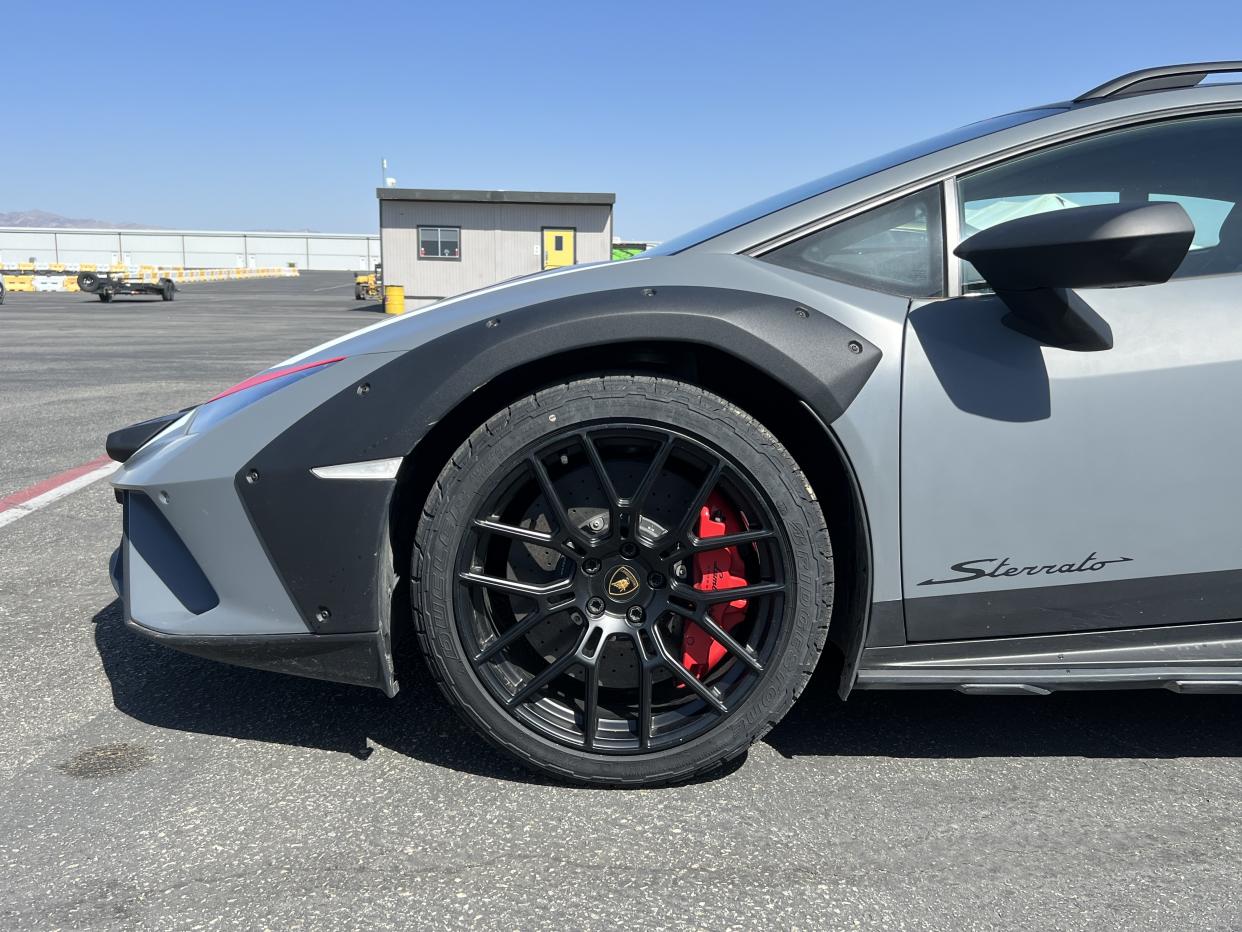
Looking up top and down the back of the Sterrato, Lamborghini has placed the air intake on the top of the roof, like an F1 race car, feeding fresh air into the bowels of the V10 engine.
Lamborghini says the snorkel-like intake keeps dust and particles from getting into the engine, but with the piping going down the roof and through the cabin into the engine, a glorious intake sound is heard — everywhere.
All-wheel drive and power galore
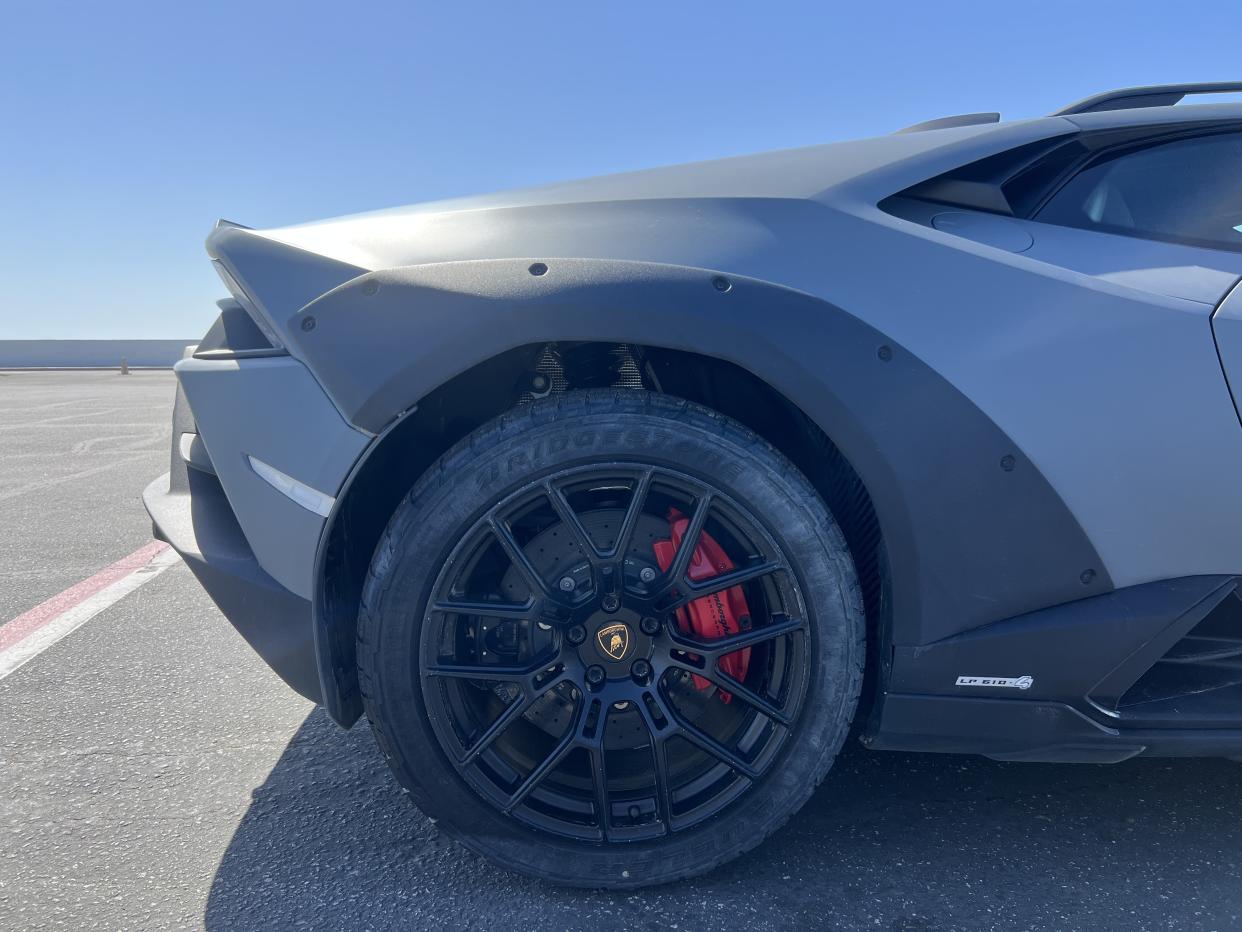
Another key differentiator for this supercar is its stance and suspension.
The car is lifted about 1.7 inches above the ground, which doesn’t sound like much, but for a supercar that hugs the ground, those extra couple of inches really matter
The suspension has been totally re-tuned from the standard Huracán to improve off-road traction. The suspension has more "travel" to allow for negotiating bumpy terrain and adaptive magnetic suspension can stiffen the shocks on pavement, or loosen up when the road gets bumpy.
A rear-locking differential allows the rear wheels to put more power to the ground when traction is at a premium.
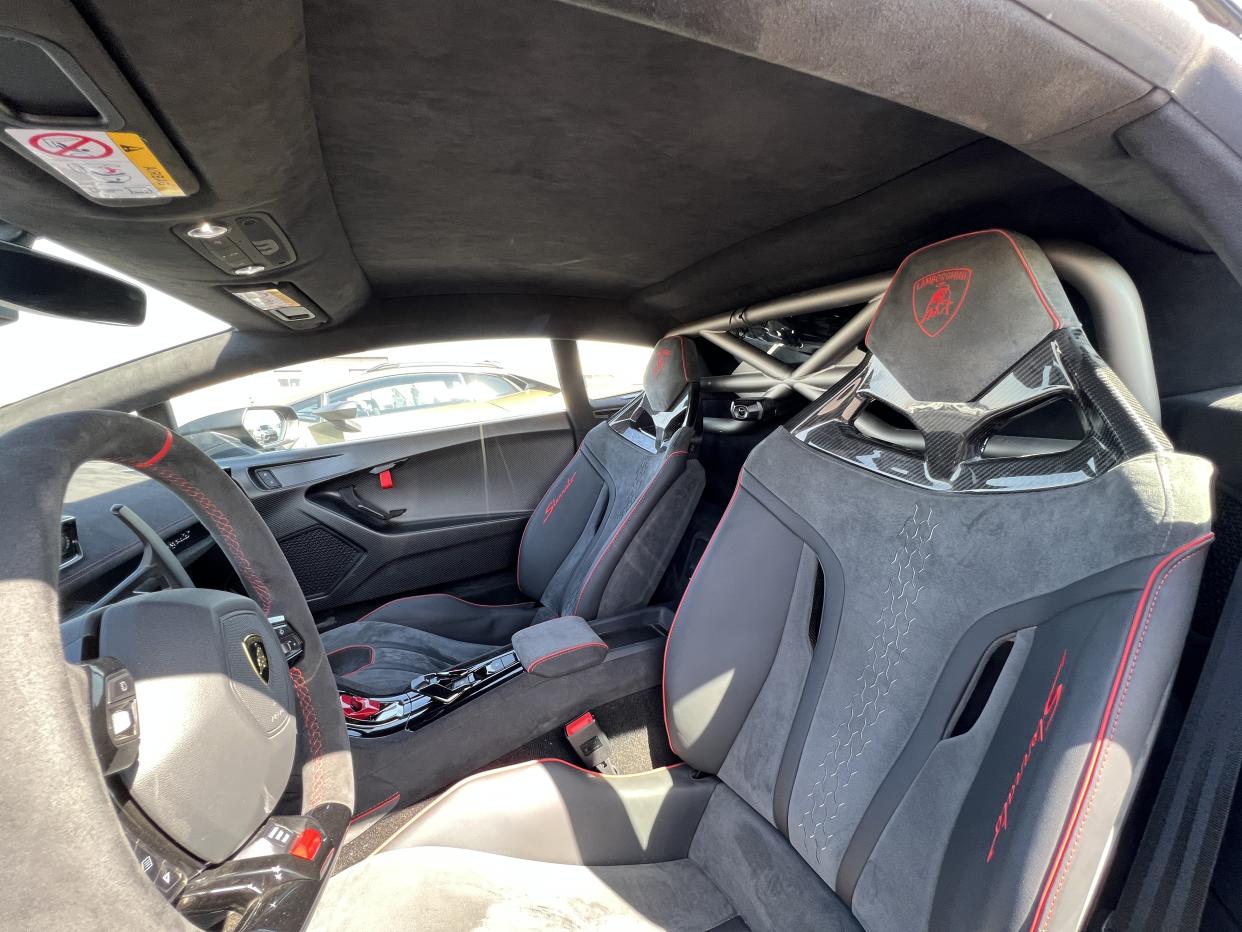
The rock-solid platform is set up to accept an enormous amount of power for the heart of the Sterrato, its naturally aspirated V-10 engine.
Ripped from the Huracán STO high-performance variant, the engine here puts out over 610 horsepower, though it is slightly detuned from the STO because of the different air intake setup mentioned above, which restricts power.
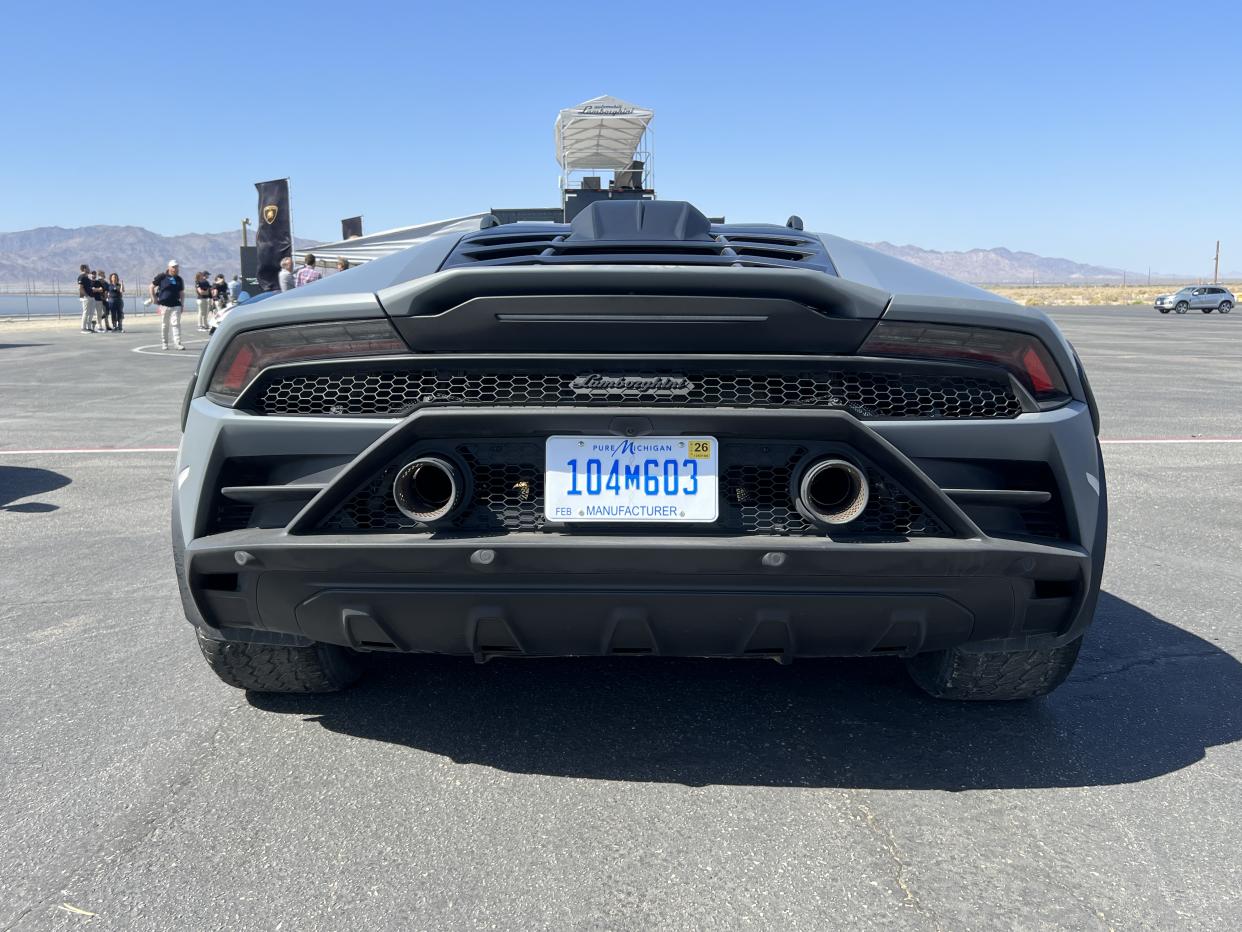
All that power and torque is fed through the Sterrato’s Haldex all-wheel drive system, a system that when switched into “rally” mode makes the car a totally different animal.
Taking the Sterrato off the beaten path
At Chuckwalla raceway in the southern California high desert, Lamborghini constructed a course featuring both on- and off-road driving for journalists and clients to test out the Sterrato in an environment it was explicitly built for.
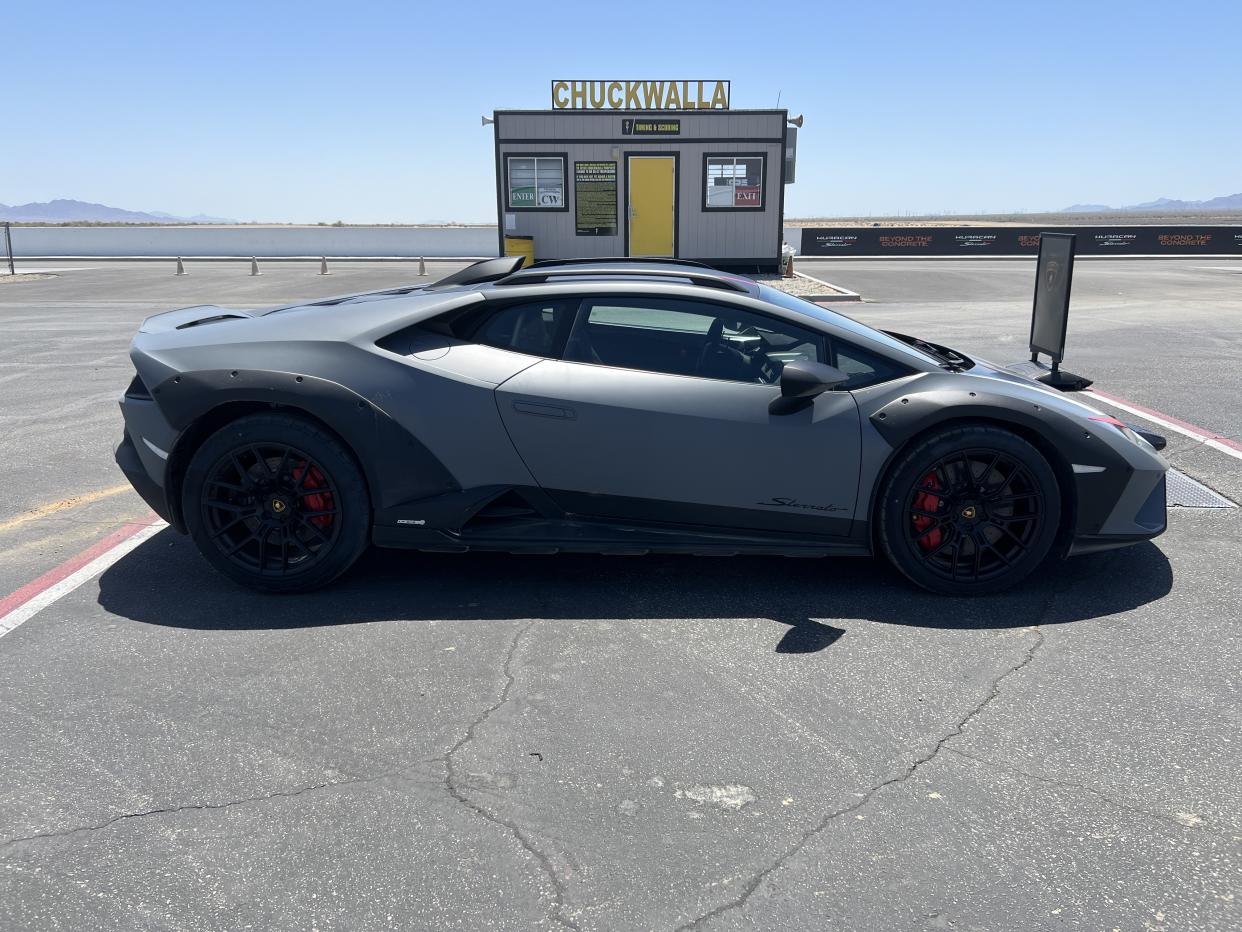
The on-track experience was to be expected.
The original Huracán had phenomenal, direct steering and oodles of power to send the car around the track at speed — even for those that aren’t seasoned track pros.
The all-wheel-drive system helped keep grip and control at a maximum, and the thicker tires in Sterrato actually made the ride slightly more forgiving.
But it was off-road where this car blew my mind.
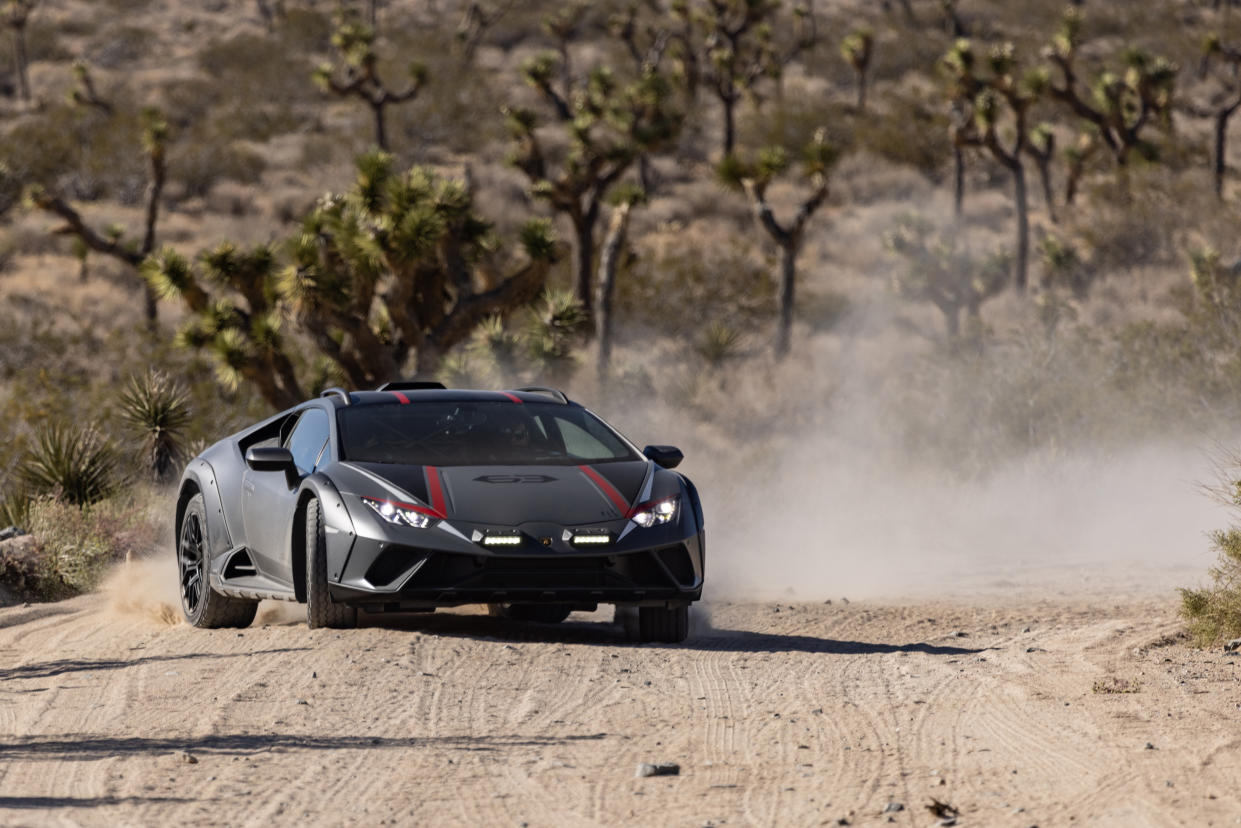
Turning off the pavement onto the off-road track meant taking the car directly on loose gravel, sand, and deep ruts — with traction almost non-existent.
With rally mode engaged, the car allowed for more power to the rear while the looser suspension gave the car a playful, almost flickable nature for a vehicle of its size and power.
The dynamics of the Sterrato, with a rearward bias of the all-wheel drive system, allowed the driver to arrive at a turn, steer right after braking, which immediately swung the Sterrato around the corner into oversteer, then smash the accelerator allowing the car to correct its path forward.
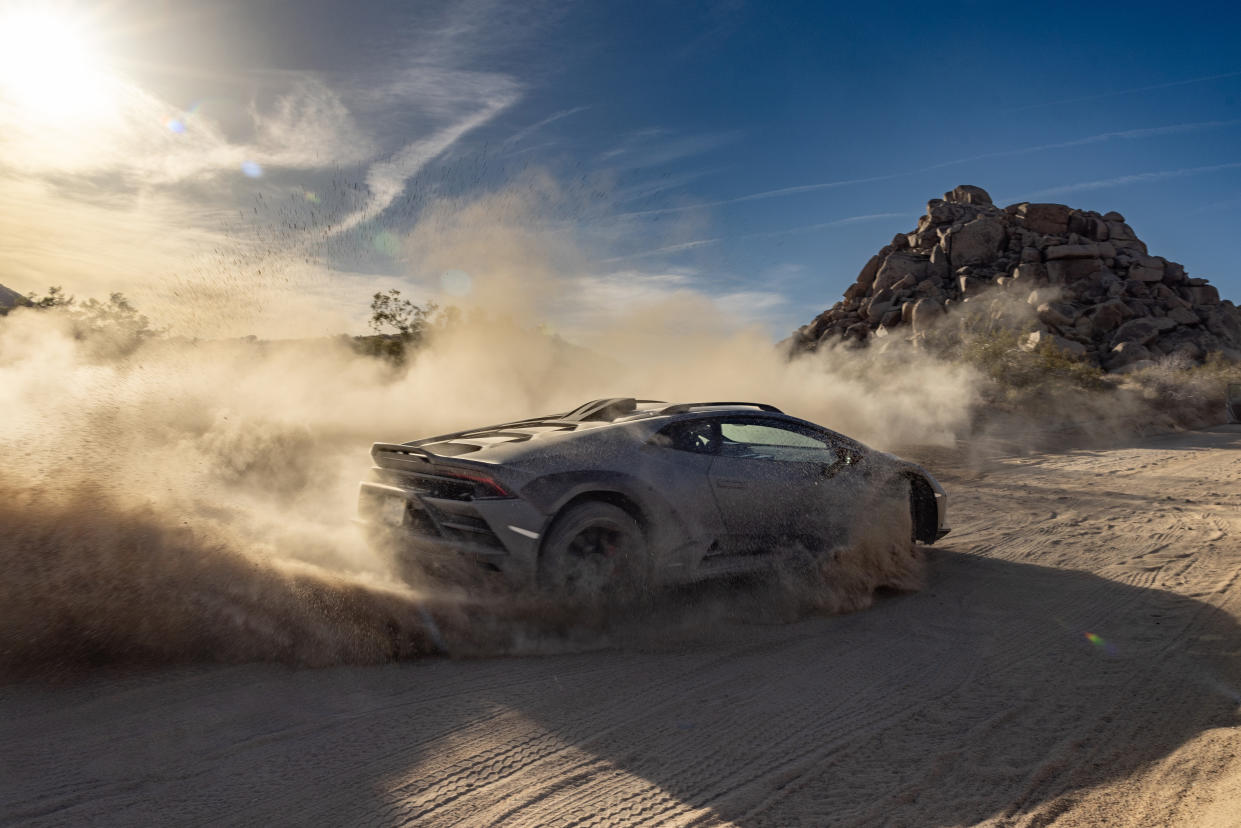
Initially, I was fearful to floor the accelerator with that much power while the car was turning violently. As an amateur driver, it felt like the car would surely slide off the trail.
But the way the system works, the car "knows" in rally mode what you're attempting to do, and allows for the right amount of slip and traction to get the job done.
The pro driver sitting co-pilot next to me practically shouted to keep the gas pedal down out of the turn, telling me to "trust the car."
"Give it gas, give it gas, give it gas!" And I did.
It was an edge-of-my-seat, grab-the-car-by-the-scruff-of-its-neck type of visceral driving. Again grip was tough to come by, but then you grab a patch of traction and you're off. The word "dynamic" doesn't do the test drive justice.
Why the Sterrato is already modern-day legend
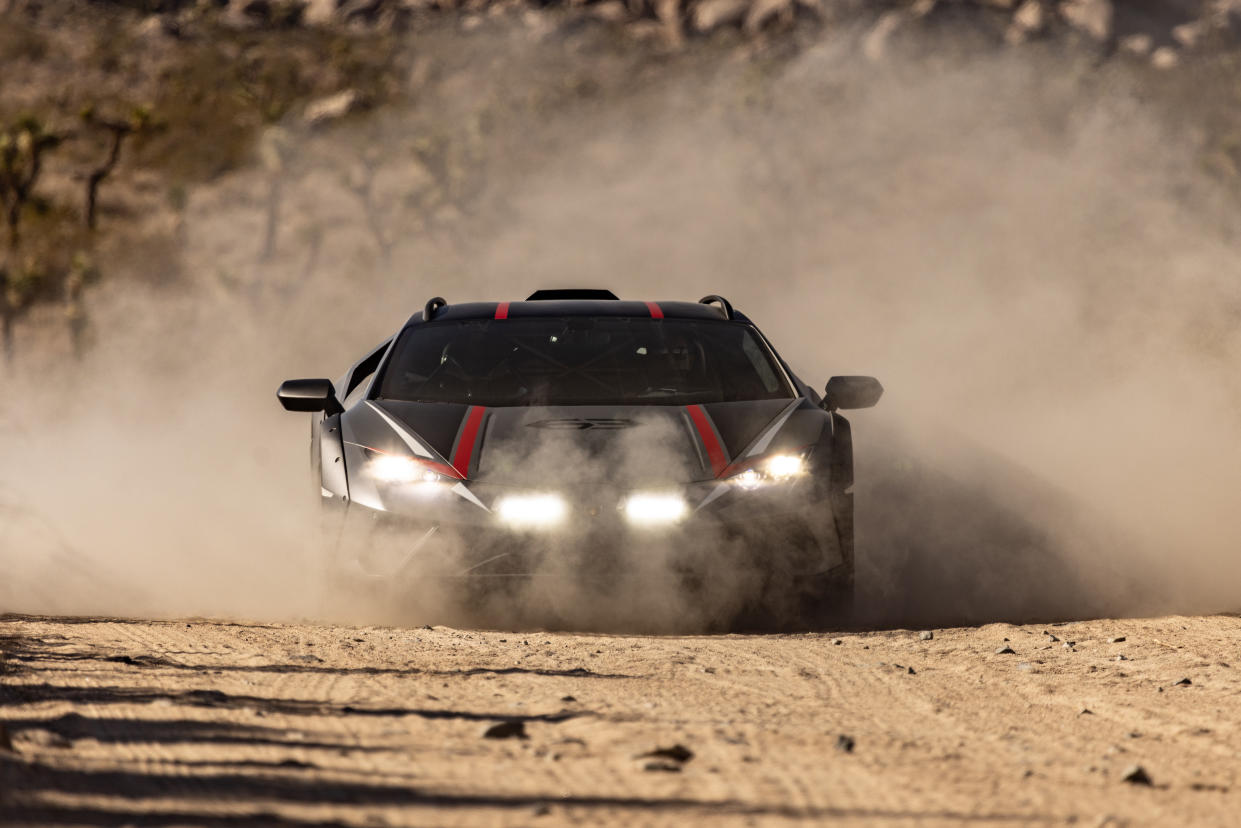
That mad scientist Stephan Winkelmann and his team of engineers and designers at Lamborghini have made something so unique in the car world it seems collectors will be going after one another to get their hands on one.
The 1,499 examples of the Sterrato are already all sold out, but that's no surprise when you consider there is nothing on the road like this car.
If you were lucky enough to be invited by Lamborghini to purchase one — and you have the means — the Sterrato starts at around $270,000. When this car hits the aftermarket and auction sites, it will go for orders of magnitude above the MSRP.
Bottom line: The Huracán Sterrato is absolutely unbelievable, full stop. It’s a feat of engineering that actually exists. I can't believe it exists, but I'm glad it does.
For a mind-boggling car — maybe the wildest Lamborghini has ever made — perhaps an astronomical figure is "worth" it for the Sterrato.

—
Pras Subramanian is a reporter for Yahoo Finance. You can follow him on Twitter and on Instagram.
Read the latest financial and business news from Yahoo Finance
